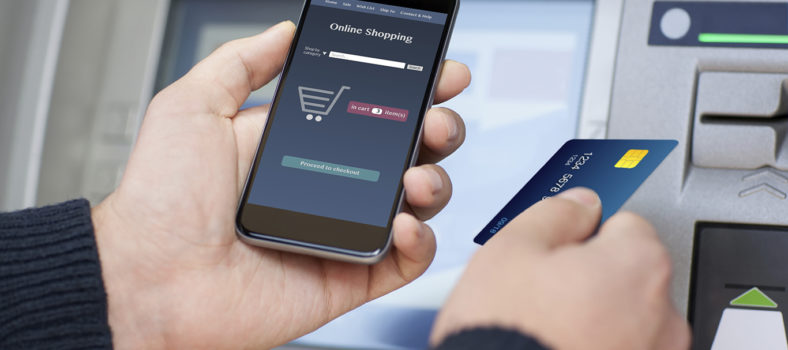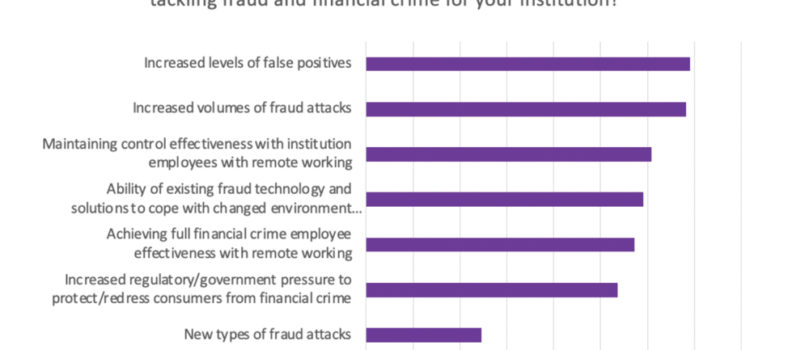 By Jason Cottrell
By Jason Cottrell
After over a year of not touching anything — door knobs, items on a store shelf, other people — it’s perhaps no surprise that Amazon is trialing a new, contactless payment method that requires nothing more than the swipe of a hand in front of a sensor. It captures all that we’ve learned and will take forward with us in the new world of digital commerce, lessons that could be summed up in five words: connected convenience above all else.
As they almost always do, Amazon has provided us with a great window into a possible future — but whether it’s a probable one remains to be seen. Over more than a decade working with Fortune 500 companies to enable connected convenience, we’ve learned important lessons about how to implement new technologies successfully. Our growing body of research into consumer comfort with technology is adding to our understanding of what works when and how to implement new tech with the greatest chance of both technical success and consumer buy-in.
So what does it take to roll out a successful new tech solution? Strong technical underpinnings and an empathetic customer approach.
Set the foundation for success
Contactless payment isn’t new; we’ve had tap and mobile pay options for years in Canada. But the difference between tapping your bank card and using your palm as a personal barcode is significant, at least in the minds of consumers. To win customers over to a new technology, you have to start by getting the technical execution right. If it doesn’t work properly the first time they use it, they won’t deign to use it again.
Amazon Go, the first checkoutless shopping experience from the mega-retailer to make headlines, relies on cameras and geofencing technologies. The system is remarkably accurate — years of testing and training the system before launching it to the public paid off. The added convenience it promised in concept is being executed on in practice, and that’s crucial.
Our data shows that shoppers are relatively keen to embrace the checkoutless experience (it ranked in the top 25 technologies we surveyed), but they’re wary of the underlying technologies (facial recognition and geofencing rank last and a mere 6 spots higher, respectively). To overcome that hesitancy, Amazon had to execute perfectly on the technical execution from the get-go. If not, consumers would have resisted the experience and the experiment very likely would’ve gone nowhere.
As it is, Amazon’s foray into checkoutless shopping has done remarkably well and the ripple effect has been profound. Not only are they piloting even more technologically advanced payment methods, but others in the grocery and retail industry are following suit in their own ways. Smart shopping carts, on-the-go self-scanning — the possibilities are varied and experimentation is on the rise.
Both Forrester and Gartner have written about composable architectures as the future of enterprise. It’s a position that we believe in and it’s picking up steam across the industry. The emergence of the MACH Alliance is a testament to the growing faith in composable architectures, as is the proliferation of technical solutions that enable organizations to build the exact right experiences for their business.
With a composable architecture, organizations have the ability to rapidly test new technologies with minimal risks. They can work with best-of-breed solutions, allowing them to roll out the best possible version of an experience at launch. Because those early trials need to be executed extremely well, this is a huge potential differentiator between successful experiences and failures. A first iteration can be lightweight and even low-featured, but it needs to do the things it can do correctly every time.
A composable architecture isn’t the absolute best solution for every business, but for the Fortune 500 clients we work with, it tends to be. Those that are actively working to implement this approach today — to move at least parts of their business off of a monolithic solution and embrace a more flexible, adaptable architecture — are the ones we expect to see succeeding tomorrow.
Understand what your customers want
Getting the technical details right is a challenge, but there are almost always logical ways to overcome the hurdles and once the right underlying structure is in place, organizations are free to experiment with new tech solutions. That said, knowing which innovations to pursue doesn’t come with the same clear answers. (If it did, it wouldn’t be an experiment.) This is where we turn to research, combining reams of data and insights about an industry with the expertise of our clients, and increasingly, with our own consumer comfort data.
To help inform and support the approaches we take, we’ve surveyed thousands of people about new and emerging technologies. Our Robots Among Us survey provides a snapshot of current levels of consumer comfort with the changing digital landscape and tracks those responses over time.
Consumers like the idea of checkoutless shopping, but as noted earlier, the technologies that enable checkoutless shopping are significantly less welcome. That distinction tells us a lot about how to approach the rollout of a new experience. Being able to assess the perception of technology solutions plays a huge role in their success. It can drastically alter your messaging and even the ways in which you implement it.
We know that focusing on the benefits is crucial to a new tech’s success, but the survey data adds an interesting layer to that story: when it comes to checkoutless shopping, it’s important to present the idea as a whole instead of its disparate parts. This isn’t always the case with emerging technologies.
With cars, autonomy is being introduced in pieces — lane and parking assist features first, full self-driving sometime down the line. But unlike autonomous vehicles, which consumers view as scary and overwhelming when presented as a whole, checkoutless shopping is scary for consumers when presented in its parts. Consumers would reject facial recognition without the checkoutless benefits attached.
The circumstances in which the technology is deployed also matter. Busy urban professionals are more likely to find the ease of the walk-in, walk-out Amazon Go experience worth the privacy trade-off facial recognition requires. But overburdened suburban parents who need to get everything their large family needs for a week would likely adapt to a smart shopping cart better, since it isn’t dependent on facial recognition technology and meets their needs more closely.
Understanding where trade-offs lie with consumer comfort is important for determining what technology you choose, how much of it you experiment with at a time, and how you present it to the public when you test it out.
For retailers looking to prepare for a future of connected convenience, whatever shape it takes, now is the time to lay the groundwork with a composable architecture that enables them to spring into action to test out best-in-class new solutions as they come. Amazon One is still in early days, and while consumers may not be willing to give a palm print to a corporation for the sake of a little added convenience just yet, the likelihood that they will in a few years — especially if it connects to additional services that offer significant benefits for them — isn’t that outrageous.
Jason Cottrell is CEO of Myplanet, the leading software studio specializing in AI-driven digital platform experiences.




